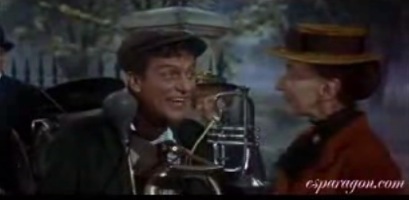More love for Vista: "Lenovo offering 'downgrades' to XP. See here. Question: When your machine runs faster, and your drivers all work, why is it called a 'downgrade'? Just asking.
Thursday, August 30, 2007
More love for Vista
Six-horned goat
dontcha want one
Six-horned goat: "
According to ChinaDaily.com, this six-horned goat, a rare beast, lives on a farm in the Inner Mongolia Autonomous Region.
Link
(Via Boing Boing.)
Steve Jobs and Steve Wozniak "Lego" playset
Steve Jobs and Steve Wozniak "Lego" playset: "This Wednesday, Podbrix will release its limited-edition Young Woz and Jobs custom 'Lego' playset. The Apple founders are now immortalized as minifigs. Only 300 of the sets were made and they'll sell for $39.99. From the Podbrix announcement:
Hand created by Tomi, each playset contains a young version of Jobs and Woz immortalized in minifig form. The backdrop set features a desk with custom made computer, circuit board based project in progress, and a 2001 style calendar marking a fateful date. The reverse of the backdrop displays the limited edition unit number and is signed by Tomi. Some assembly is required.
Link
(Via Boing Boing.)
Sex and religion prompt newspapers to censor "Opus" comic
stupid is as stupid censors
Sex and religion prompt newspapers to censor "Opus" comic: "Cory Doctorow:
In Opus -- Berkeley Breathed's comic strip followup to Bloom County -- the ever-changeable Lola Granola has taken up conservative Islam as her latest fad. In response, chickenshit newspaper editors across America have pulled the strip, scared of offending people with sex and religion. As Dan Gillmor writes at The Center for Citizen Media Blog, 'Puritan prudishness and political cowardice: Now there’s a combination that’s just certain to attract more readers.'
Link to Salon editorial about the controversy,
Link to this week's Opus
(Via Boing Boing.)
Record-breaking Dalek gathering in Manchester
ex-term-eee-nate
Record-breaking Dalek gathering in Manchester: "Cory Doctorow:
Tony sez, 'I work a MoSI, the Museum of Science and Industry in Manchester and earlier today we had a Dalek invasion!
The aim was to set the record for the most Daleks in one place and it was even attended by Raymond Cusick.
The rule was that a person had to be inside each Dalek, hit the link for replicas, one from an old episode and many awesome costumes - including a one year old Dalek.'
Link to Flickr set,
Link to BBC coverage
(Thanks, Tony!)
(Via Boing Boing.)
Sunday, August 26, 2007
Bubba Nosferatu Gets Giamatti, Waiting for Campbell
if only were it true
Bubba Nosferatu Gets Giamatti, Waiting for Campbell: "In the 'things that sound awesome but can't possibly be true' department, Paul Giamatti is listed in the cast of Bubba Nosferatu. The prequel to Bubba Ho-Tep would have Bruce Campbell's Elvis Pressley battle vampires. But come on, acclaimed thespian Paul Giamatti would never do a low budget camp movie,..."
(Via Rotten Tomatoes: News.)
Bill Murray Delivers Crippling Blow to Swedish-American Relations
oh the humiliation
Bill Murray Delivers Crippling Blow to Swedish-American Relations: "It's often difficult to tell where performance art ends and real life begins with Bill Murray, so for all we know, this could be part of some elaborate stunt -- but according to The Hollywood Reporter (via the AP wire), Murray experienced an unusual run-in with Swedish police this week,..."
(Via Rotten Tomatoes: News.)
Peer Review: Google Sky leaves reporters starry-eyed
very cool y'all should take a gander
Peer Review: Google Sky leaves reporters starry-eyed: "

Way back in January, we guessed that Google's next mapping project might include the universe. We were right: this week Google introduced its latest version of Google Earth. In the new download, users can click a 'switch to sky,' option. Suddenly, instead of looking down on earth from space, they're be looking up at space via a compilation of more than a million satellite images.
Google maps of space! What's not to like? Headlines this week included 'The service is out of this world' (Ireland's Silicon Republic), while a 'Earthtimes' called it a 'heavenly add on,' and newspapers cooed "Google reaches for the stars." Which isn't to say that the service is perfect: Many reporters agreed that Google Sky is going to need some tweaks. More thoughts from around the web after the jump.
"When I heard about the concept of Google Sky, I started to think, 'wouldn’t "Google Universe' have been a better name?' …So it was at that point that I decided to see wassup with the domain, googleuniverse.com. Surely, Google had parked it, no? N-o-o-o… if Google really wants to use Google Universe, they’d have to go through some guy in Queensland, Australia." — Russell Shaw, ZDNet
"'It's a great idea. It's going to be very successful, especially with the general public and schools,' says Francisco Diego, an astronomer at University College London, U.K., who is involved in science outreach. But for astronomers, even of the backyard variety, he notes, it's not the ideal tool. 'Amateur astronomers would be better off with something like Stellarium or Starry Night — you can see the sky above your head at any time, which Google Sky doesn't do,' says Diego." — Jeff Kanipe & Nicola Jones, Nature
"Missing, or perhaps a feature I can't find, is a feature that allows me to punch in the date, time, and my position on Earth that would allow me to see what the night sky would look like from my backyard. Google Sky is off to a good start. My fingers are crossed Google and third parties will add more content to Google Sky." — Tom Spring, PC World
"Hopefully Google will partner with other sky-registry organizations, space-science agencies, academic institutions, and observatories to include more information on existing objects in the database and to add more deep-sky imagery for your zooming pleasure." — Alan Henry, AppScout
"Google Sky is exciting for many different reasons, even if you're not an astronomy geek. I wonder what big dataset Google will open up to public scrutiny in an easily-accessible form next? — Ben Tudor, Information World Review
"My first impression is that my beloved Starry Night is in no danger of losing its spot on my Mac dock. Even with the combined forces of the Digital Sky Survey Consortium, Hubble, Palomar, the U.K.'s Astronomy Technology Center, and the Anglo-Australian Observatory on deck. Imaginova's been offering [Starry Night] for years and believe me, they have some user-interface insight that Google can't touch. (And I don't mean anything too arcane, either; I'm talking about basics like horizon line and show/hide for sunlight and such.) That said? I am incredibly pleased with the possibility for incorporating star maps into… oh, everything." — Angela Gunn, USA Today
"Google's mission is no longer to organize the world's information, but the universe's. Vint Cerf's talk at GeoWeb a few weeks ago now takes on a whole new salience. (He cautioned against developing a too Earth-centric internet.)" — Stefan Geens, Ogle Earth
"I'll not bore you with tales of wide-eyed amazement. But Google Sky is cool and should be an excellent teaching tool for my kids. They're used to Google… That should thrill investors. If kids grow up on Google, they'll be more likely to stick with the portal in later years." — Tim Beyers, Motley Fool
"Google Earth already has user-generated layers allowing you to view everything from proposed construction projects to real-time weather to annotated vacation snapshots. I want to see amateur astronomers add their own pix to Google Sky. I want to browse through all the locations where we've found intriguing SETI signals. Or how about a layer showing the home planets of all the aliens on Star Trek?" — David M. Ewalt, Forbes.com
"I don’t like it. Well, to be clear, I don’t like it yet. I think this version is lacking some basic necessities, but once they (and some tweaks) are added this will be a pretty cool app. For one thing, when I clicked the button to start it, it said it was loading the sky above my current location. However, it doesn’t tell me what that current location is. It doesn’t tell me what time of day it’s using — the sky moves, so time is crucial." — Philip C. Plait, Bad Astronomy
— S.E. Kramer
"(Via SCI FI Tech Blog.)
New Pixelated Glass Window in Cologne Cathedral
wish my childhood catholic church had one of these
New Pixelated Glass Window in Cologne Cathedral: "Xeni Jardin:
BoingBoing reader Michael Shaughnessy says,
Greetings from Cologne, Germany. Yesterday the new Gerhard Richter glass window was unveiled at the Cologne Cathedral. It looks like a group of pixels and is stunning to look at. The line to get in was over an hour and even today, hundreds of passers by simply were staring at the window in amazement. It is great to see how a modern application of old technology can have a positive effect on people. The artist Gerhard Richter, designed the window for free as a gift to the city of Cologne and the over 1 million people who visit the cathedral each year.
Here is one high res version and I am sure many other images will appear soon on Flickr.
Link
(Via Boing Boing.)
Saturday, August 25, 2007
Holographic Universe
Holographic Universe: "The Universe as a Hologram
Does Objective Reality Exist, or is the Universe a Phantasm?
In 1982 a remarkable event took place. At the University of Paris a research team led by physicist Alain Aspect performed what may turn out to be one of the most important experiments of the 20th century. You did not hear about it on the evening news. In fact, unless you are in the habit of reading scientific journals you probably have never even heard Aspect's name, though there are some who believe his discovery may change the face of science.
Aspect and his team discovered that under certain circumstances subatomic particles such as electrons are able to instantaneously communicate with each other regardless of the distance separating them. It doesn't matter whether they are 10 feet or 10 billion miles apart.
Somehow each particle always seems to know what the other is doing. The problem with this feat is that it violates Einstein's long-held tenet that no communication can travel faster than the speed of light. Since traveling faster than the speed of light is tantamount to breaking the time barrier, this daunting prospect has caused some physicists to try to come up with elaborate ways to explain away Aspect's findings. But it has inspired others to offer even more radical explanations.
University of London physicist David Bohm, for example, believes Aspect's findings imply that objective reality does not exist, that despite its apparent solidity the universe is at heart a phantasm, a gigantic and splendidly detailed hologram
To understand why Bohm makes this startling assertion, one must first understand a little about holograms. A hologram is a three-dimensional photograph made with the aid of a laser. To make a hologram, the object to be photographed is first bathed in the light of a laser beam. Then a second laser beam is bounced off the reflected light of the first and the resulting interference pattern (the area where the two laser beams commingle) is captured on film. When the film is developed, it looks like a meaningless swirl of light and dark lines. But as soon as the developed film is illuminated by another laser beam, a three-dimensional image of the original object appears.
The three-dimensionality of such images is not the only remarkable characteristic of holograms. If a hologram of a rose is cut in half and then illuminated by a laser, each half will still be found to contain the entire image of the rose. Indeed, even if the halves are divided again, each snippet of film will always be found to contain a smaller but intact version of the original image. Unlike normal photographs, every part of a hologram contains all the information possessed by the whole.
The 'whole in every part' nature of a hologram provides us with an entirely new way of understanding organization and order. For most of its history, Western science has labored under the bias that the best way to understand a physical phenomenon, whether a frog or an atom, is to dissect it and study its respective parts. A hologram teaches us that some things in the universe may not lend themselves to this approach. If we try to take apart something constructed holographically, we will not get the pieces of which it is made, we will only get smaller wholes.
This insight suggested to Bohm another way of understanding Aspect's discovery. Bohm believes the reason subatomic particles are able to remain in contact with one another regardless of the distance separating them is not because they are sending some sort of mysterious signal back and forth, but because their separateness is an illusion. He argues that at some deeper level of reality such particles are not individual entities, but are actually extensions of the same fundamental something.
To enable people to better visualize what he means, Bohm offers the following illustration. Imagine an aquarium containing a fish. Imagine also that you are unable to see the aquarium directly and your knowledge about it and what it contains comes from two television cameras, one directed at the aquarium's front and the other directed at its side. As you stare at the two television monitors, you might assume that the fish on each of the screens are separate entities. After all, because the cameras are set at different angles, each of the images will be slightly different. But as you continue to watch the two fish, you will eventually become aware that there is a certain relationship between them. When one turns, the other also makes a slightly different but corresponding turn; when one faces the front, the other always faces toward the side. If you remain unaware of the full scope of the situation, you might even conclude that the fish must be instantaneously communicating with one another, but this is clearly not the case.
This, says Bohm, is precisely what is going on between the subatomic particles in Aspect's experiment. According to Bohm, the apparent faster-than-light connection between subatomic particles is really telling us that there is a deeper level of reality we are not privy to, a more complex dimension beyond our own that is analogous to the aquarium. And, he adds, we view objects such as subatomic particles as separate from one another because we are seeing only a portion of their reality. Such particles are not separate 'parts', but facets of a deeper and more underlying unity that is ultimately as holographic and indivisible as the previously mentioned rose. And since everything in physical reality is comprised of these 'eidolons', the universe is itself a projection, a hologram.
In addition to its phantomlike nature, such a universe would possess other rather startling features. If the apparent separateness of subatomic particles is illusory, it means that at a deeper level of reality all things in the universe are infinitely interconnected. The electrons in a carbon atom in the human brain are connected to the subatomic particles that comprise every salmon that swims, every heart that beats, and every star that shimmers in the sky. Everything interpenetrates everything, and although human nature may seek to categorize and pigeonhole and subdivide, the various phenomena of the universe, all apportionments are of necessity artificial and all of nature is ultimately a seamless web.
In a holographic universe, even time and space could no longer be viewed as fundamentals. Because concepts such as location break down in a universe in which nothing is truly separate from anything else, time and three-dimensional space, like the images of the fish on the TV monitors, would also have to be viewed as projections of this deeper order. At its deeper level reality is a sort of superhologram in which the past, present, and future all exist simultaneously. This suggests that given the proper tools it might even be possible to someday reach into the superholographic level of reality and pluck out scenes from the long-forgotten past.
What else the superhologram contains is an open-ended question. Allowing, for the sake of argument, that the superhologram is the matrix that has given birth to everything in our universe, at the very least it contains every subatomic particle that has been or will be -- every configuration of matter and energy that is possible, from snowflakes to quasars, from blue whales to gamma rays. It must be seen as a sort of cosmic storehouse of 'All That Is.'
Although Bohm concedes that we have no way of knowing what else might lie hidden in the superhologram, he does venture to say that we have no reason to assume it does not contain more. Or as he puts it, perhaps the superholographic level of reality is a 'mere stage' beyond which lies 'an infinity of further development'.
Bohm is not the only researcher who has found evidence that the universe is a hologram. Working independently in the field of brain research, Standford neurophysiologist Karl Pribram has also become persuaded of the holographic nature of reality. Pribram was drawn to the holographic model by the puzzle of how and where memories are stored in the brain. For decades numerous studies have shown that rather than being confined to a specific location, memories are dispersed throughout the brain.
In a series of landmark experiments in the 1920s, brain scientist Karl Lashley found that no matter what portion of a rat's brain he removed he was unable to eradicate its memory of how to perform complex tasks it had learned prior to surgery. The only problem was that no one was able to come up with a mechanism that might explain this curious 'whole in every part' nature of memory storage.
Then in the 1960s Pribram encountered the concept of holography and realized he had found the explanation brain scientists had been looking for. Pribram believes memories are encoded not in neurons, or small groupings of neurons, but in patterns of nerve impulses that crisscross the entire brain in the same way that patterns of laser light interference crisscross the entire area of a piece of film containing a holographic image. In other words, Pribram believes the brain is itself a hologram.
Pribram's theory also explains how the human brain can store so many memories in so little space. It has been estimated that the human brain has the capacity to memorize something on the order of 10 billion bits of information during the average human lifetime (or roughly the same amount of information contained in five sets of the Encyclopaedia Britannica).
Similarly, it has been discovered that in addition to their other capabilities holograms possess an astounding capacity for information storage --simply by changing the angle at which the two lasers strike a piece of photographic film, it is possible to record many different images on the same surface. It has been demonstrated that one cubic centimeter of film can hold as many as 10 billion bits of information.
Our uncanny ability to quickly retrieve whatever information we need from the enormous store of our memories becomes more understandable if the brain functions according to holographic principles. If a friend asks you to tell him what comes to mind when he says the word 'zebra', you do not have to clumsily sort back through some gigantic and cerebral alphabetic file to arrive at an answer. Instead, associations like 'striped', 'horselike', and 'animal native to Africa' all pop into your head instantly. Indeed, one of the most amazing things about the human thinking process is that every piece of information seems instantly cross- correlated with every other piece of information--another feature intrinsic to the hologram. Because every portion of a hologram is infinitely interconnected with every other portion, it is perhaps nature's supreme example of a cross-correlated system.
The storage of memory is not the only neurophysiological puzzle that becomes more tractable in light of Pribram's holographic model of the brain. Another is how the brain is able to translate the avalanche of frequencies it receives via the senses (light frequencies, sound frequencies, and so on) into the concrete world of our perceptions.
Encoding and decoding frequencies is precisely what a hologram does best. Just as a hologram functions as a sort of lens, a translating device able to convert an apparently meaningless blur of frequencies into a coherent image, Pribram believes the brain also comprises a lens and uses holographic principles to mathematically convert the frequencies it receives through the senses into the inner world of our perceptions.
by Denis Jones"
(Via The Rant.)
Friday, August 24, 2007
Goth day at Disneyland 2007 pix
for the family disneyphiles
Goth day at Disneyland 2007 pix: "Cory Doctorow:
Last weekend was Bat's Day in the Fun Park, the annual goth day at Disneyland. I attended last year and had a ball -- thousands of goths converged on the Happiest Place on Earth, trying not to grin as they ambled through the environs in their fishnets and white makeup. It looks like this year's event was even bigger -- the LA Weekly has a slideshow of shots, and Flickr's Batsday tag is a clicktrance's worth of goodness.
Link
(Thanks, Scott!)
(Photo credit: Main event gathering, a Creative Commons-licensed photo, ganked from dj drüe's Flickr photostream)
(Via Boing Boing.)
Tag: the Ring meets zombies
put the graphique in graphic novel;
Tag: the Ring meets zombies: "Cory Doctorow:
Tag is a horror comic that tells the story of Mitch, an angry man whose loveless relationship with Izumi (his on-again, off-again girlfriend) has just ended, again. They're leaving the restaurant when a shambling horror runs up to him, touches him in the chest and shouts, 'Tag, you're it!' Immediately, Mitch begins to die, his bodily functions shutting down, even though he remains able to walk and even talk (when he remembers to draw a breath). He and Izumi confront his death -- the rigor mortis, the rotting -- together, trying to figure out what happened to him. They find answers on a blog, where an earlier 'tag' victim explains the rules by which this odd strain of zombiism is spread.
Tag comes from Boom Studios, written by Keith Giffen and illustrated by Kody Chamberlain and Chee. It has many resonances with The Ring and other stories that revolve around understanding the 'rules' governing the creeping awfulness at the heart of the story. Like The Ring, Tag uses its gimmick to tell a damned fine tale about love and betrayal, a story with many layers that are peeled back as the story moves to a moving climax.
Link
See also:
Death Valley: a graphic novel that's like John Hughes vs George Romero
Zombie Tales: comics anthology
(Via Boing Boing.)
Thursday, August 23, 2007
The Onion: ‘Fucking Yankees, Reports Nation’
not a baseball fan but har har
The Onion: ‘Fucking Yankees, Reports Nation’: "
The Onion:
‘Fucking Yankees,’ said Marshfield, MA resident and longtime Red Sox fan Lawrence Broberg, echoing the sentiments of thousands of men and woman across the nation. ‘Every year. Every goddamn year.’
"
(Via Daring Fireball.)
Panflute Flowchart
diagram it
Panflute Flowchart: "Xeni Jardin:
BoingBoing reader Anthony says,
Since we're on a flowchart roll at BoingBoing, my favorite is Toothpaste for Dinner's Panflute flowchart. It's hard to beat on brevity or accuracy. This link is to the presumably permanent location of the gif image of the flowchart on the Toothpaste for Dinner site.
Previously on BoingBoing:
(Via Boing Boing.)
Worst fake accents in film
Worst fake accents in film: "David Pescovitz:
Deputydog posted a great selection of '13 of the worst fake accents in film,' including YouTube clips where available. Readers have suggested dozens of others in the comments, which is where you should post your 'nominees' too! From the Deputydog post:
keanu reeves - dracula
i was tempted not to even mention this one due to the fact that he’s not an actor. it’s just a given that he’ll never be able to imitate someone with an english accent because he can’t imitate anything unless it has no emotion, voice or physical presence. and to say yes to the part after finding out the gary oldman is gonna share scenes with you and make you look even worse is just acting suicide.
dick van dyke - mary poppins
there’s a reason why dick’s performance in mary poppins is always mentioned when the subject of shit movie accents is brought up: because it’s absolutely hilariously bad. if the director had said to him before the film, ‘listen dick, i want you to do a comedy cockney accent throughout filming. don’t take it seriously.’ he still couldn’t have done a worse accent.
Link
(Via Boing Boing.)
Insanely crowded pool
who doesn't love a crowded pool
Insanely crowded pool: "David Pescovitz:
The Trends in Japan blog posted an amazing photo taken yesterday at the Tokyo Summerland wave pool. Follow the link to see the whole photo and an insane video of the wave pool in operation. Link (via Neatorama)
(Via Boing Boing.)
Adam Gopnik on Philip K. Dick
one of my faves
Adam Gopnik on Philip K. Dick: "David Pescovitz:
In the current issue of the New Yorker, Adam Gopnik has a beautiful essay celebrating the surrealist science fiction author Philip K. Dick. Gopnik is a fantastic writer himself, having written the dispatches that were compiled in Paris to the Moon. The New Yorker feature, titled 'Blows Against The Empire,' is pegged on the Library of America publication of Philip K. Dick: Four Novels of the 1960s. From The New Yorker:
Dick tends to get treated as a romantic: his books are supposed to be studies in the extremes of paranoia and technological nightmare, offering searing conundrums of reality and illusion. This comes partly from the habit, hard to break, of extolling the transgressive, the visionary, the startling undercurrent of dread. In fact, Dick in the sixties is a bone-dry intellectual humorist, a satirist—concerned with taking contemporary practices and beliefs to their reductio ad absurdum. If we oppress the Irish, why not eat them? Swift asked, in the model of all black satire—and if we can make quotidian and trivial the technology that has already arrived, Dick wonders, then why would we not do the same to the future yet to come, psychic communication and time travel and the colonization of Mars? Although ‘Blade Runner,’ with its rainy, ruined Los Angeles, got Dick’s antic tone wrong, making it too noirish and romantic, it got the central idea right: the future will be like the past, in the sense that, no matter how amazing or technologically advanced a society becomes, the basic human rhythm of petty malevolence, sordid moneygrubbing, and official violence, illuminated by occasional bursts of loyalty or desire or tenderness, will go on. Dick’s future worlds are rarely evil and oppressive, exactly; they are banal and a little sordid, run by a demoralized élite at the expense of a deluded population. No matter how mad life gets, it will first of all be life.
Link to The New Yorker, Link to buy Philip K. Dick: Four Novels of the 1960s (via Total Dick-Head)
(Via Boing Boing.)
Comic sfx tees
Comic sfx tees: "Cory Doctorow:
AtomicMadhouse's line of comics sound-effect tees is pretty swell.
Link
(Thanks, Frank!)
(Via Boing Boing.)
Saturday, August 11, 2007
Apple is Making Me iHappy!
iAgree
Apple is Making Me iHappy!: "Do you ever feel like technology is just running away from you? With the release of iLife and iWork '08 I have to say, I am a little overwhelmed! Before Aperture I had never been a big fan of..."
(Via O'Reilly Digital Media Blog.)
‘How Apple May Deal With the Dreaded “Intel Inside” Sticker’
and me with an oldye macworld hat that says Mac Inside Intel style
‘How Apple May Deal With the Dreaded “Intel Inside” Sticker’: "
Joy of Tech nailed it back in 2005, when Apple’s switch to Intel chips was first announced.
"
(Via Daring Fireball.)
Wednesday, August 8, 2007
A surreal and supremely inane compendium of miscellaneous knowledge, Vol 11
A surreal and supremely inane compendium of miscellaneous knowledge, Vol 11: "Mark Frauenfelder:
Nifty $99 iPod speaker for bike (clips to water bottle holder). Link

Merlin Mann discovers awesome movies at Archive.org. Link

Writer for Money magazine knocks on rich peoples' doors and asks them how they got rich. Link

1977 ad for Apple computer. Note turtleneck on man. Link

Video -- Headstone for woman's beloved pet dog, named Shithead, upsets other pet cemetary plot owners. Link

Nifty electronic art -- the Touch Box. 'When left on its own the display randomly displays patterns and alphanumeric characters that dissolve by way of some random shenanigans. It also picks colors randomly from a set that I have deemed aesthetically pleasing.'
Link
(Via Boing Boing.)
Tuesday, August 7, 2007
Suspended Animation - O'Reilly Digital Media Blog
Suspended Animation - O'Reilly Digital Media Blog: "Digital Media Home
O'Reilly Home
O'Reilly Network
Safari Bookshelf
Conferences
Sign In/My Account
View Cart
Suspended Animation
listen
Monday August 6, 2007 12:37PM
by Harold Davis in Digital Photography
In the garden in the early morning I found rain drops suspended on a spider’s web. Nearby, pink Gerbera Daisies grew. These flowers were reflected and contained in the water drops. The technical challenge was to obtain high depth-of-field with subjects in constant motion from the wind, subjects so tiny that any motion was magnified.
I locked the camera’s mirror up to eliminate one possible source of vibration. As I waited for the moment of perfect calm to squeeze the remote release, I thought about the worlds inside each water drop, suspended animation waiting for a photographer to come along.
[200mm f/4 macro, 300mm 35mm equivalent focal length, 36mm extension tube, +4 diopters close-up filter, 1/8 of a second at f/40 and ISO 100, tripod mounted.]
Comments
Name
Websi"
Monday, August 6, 2007
A surreal and supremely inane compendium of miscellaneous knowledge, Vol 10
A surreal and supremely inane compendium of miscellaneous knowledge, Vol 10: "Mark Frauenfelder:
Archie panel from the Spire Christian Comics era. Link
 Video -- Great commercial for an awful toy from the 1960s called the Swing Wing. It's a beanie with a pendulum. You put on your head and swing it around. I have a dim memory of seeing this on TV when it originally appeared. Link
Video -- Great commercial for an awful toy from the 1960s called the Swing Wing. It's a beanie with a pendulum. You put on your head and swing it around. I have a dim memory of seeing this on TV when it originally appeared. Link

MP3s -- 'Hobo Conversations and Interviews - Conversations with Sidedoor Pullman Kid Hop-A-Long Chet Dante and Austin John.' Link

Video -- shouting match between Bill O'Reilly and Sen. Chris Dodd of Connecticut. Link

The art of Hannes Bok, 1950s science fiction illustrator. Link

Polygon Pete uses ZBrush ('(It's like finding a box of infinite Sculpey!!!)
') to made 3-D drawings of Woodring characters. Link
(Via Boing Boing.)






